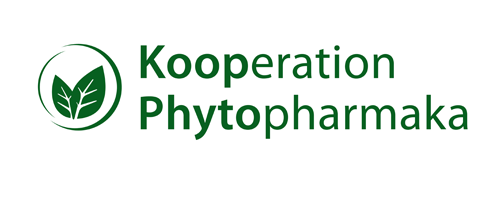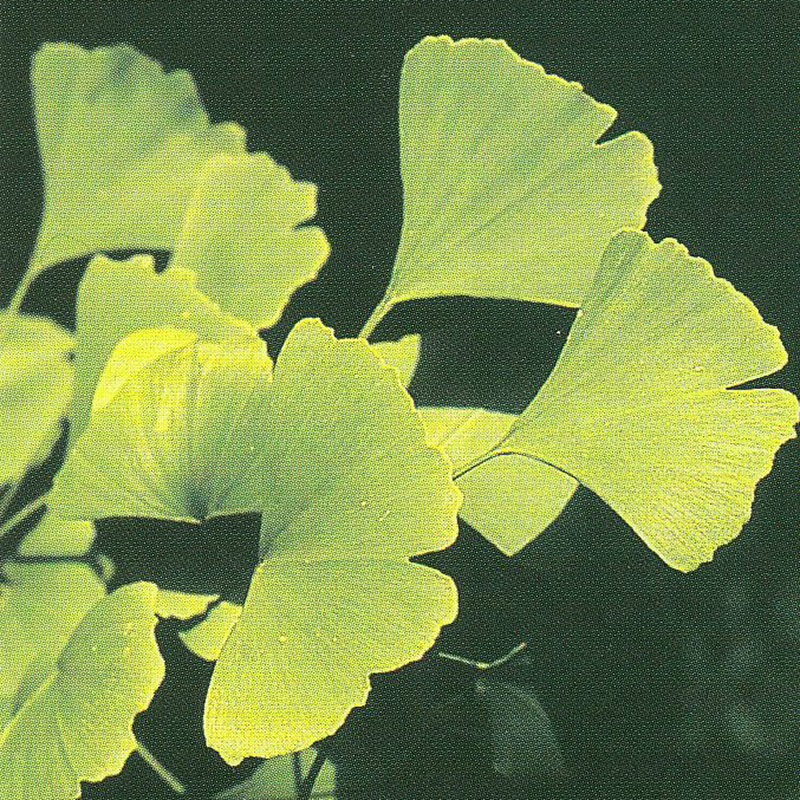Botanical name
Ginkgo biloba L.
Family
Ginkgoaceae
Common name
Ginkgo tree, Maidenhair tree
Information about the plant
The ginkgo tree can grow up to 30 to 40m high and is the only living representative of the family of Ginkgoaceae, which was widespread on Earth in the Mesozoic era. It is native to East Asia, but it is no longer found in the wild there. It has been cultivated since ancient times as a temple tree. As it is very decorative and highly resistant to air pollution, it is now planted as an ornamental tree in cities in Europe and North America. The tree is dioecious, i.e. there are trees with male and trees with female flowers. As the fleshy yellow outer layer of the female fruits (botanically they are “cones”) smells unpleasantly of butyric acid, only the male trees are planted as decorative trees; the seed kernels are edible and are a popular delicacy in China.
The Latin name is the result of a spelling mistake made by the German doctor and Japan specialist Engelbert Kaempfer (1651-1716) when translating the plant’s name from Japanese. It should actually have been “ginkyo”, derived from the Japanese ‘gin’ = silver and ‘kyo’ = fruit. This refers to the silvery, edible seeds contained in the apricot-like fruit. He wrote “ginkgo” by mistake, which was then adopted by Linné. The species epithet biloba refers to the tree’s typical two-lobed leaves with their forked veins (Latin ‘bilobus’ = two-lobed).
Medicinally used parts of plants (herbal drug)
The dried leaves are used (Ginkgo folium).
The commercially available drug comes from cultivation in Germany, the USA, and France and is also imported from China, Japan, and Korea.
Constituents of the herbal drug
Ginkgo leaves contain flavonoids, diterpene lactones (ginkgolides) and bilobalide, ginkgolic acid.
Quality of the drug
The quality of the following drugs or drug preparations is specified in the European Pharmacopoeia (Ph. Eur):
- Ginkgo leaves (Ginkgo folium)
- Ginkgo dry extract, refined and purified (Ginkgo extractum siccum raffinatum et quantificatum)
Medical applications
Recognised medical use
The HMPC has accepted the use of ginkgo leaves in the form of dry extracts (DEV 35-67:1, solvent acetone 60%) to improve age-related cognitive impairment and quality of life of adults with mild dementia as "well-established use". Ginkgo leaves in powder form have been classified as a traditional herbal medicinal product (see "Traditional use").
ESCOP - Standardized extracts: symptomatic treatment of mild to moderate dementia syndrome including primary degenerative dementia, vascular dementia and their mixed forms; brain-organ related performance disorders; neurosensory disorders such as dizziness, balance disorders and tinnitus; to improve cognitive performance. Symptomatic treatment of peripheral arterial occlusive disease (intermittent claudication).
Traditional use
Powdered ginkgo leaves have been classified by the HMPC as a traditional herbal medicinal product (Article 16a of Directive 2001/83/EC). Based upon long-standing use, powdered ginkgo leaves can be used for the relief of heaviness in the legs and the sensation of cold hands and feet that may occur with minor circulation problems. Medicines containing the powdered leaf should only be used after serious conditions have been excluded by a doctor. See also "Medical applications".
Herbal drug preparations in finished dosage forms
- A special dried extract with a drug-extract ratio (DEV native) of 35-67:1 (extraction solvent: acetone 60%) is processed in solid and liquid dosage forms. The extract is quantified at 22-27% flavonoids, reported as flavonoid glycosides and 5-7% terpene lactones, of which 2.8 to 3.4% are ginkgolides A, B and C and 2.6 to 3.1% bilobalide.
- Ginkgo homeopathic mother tincture in liquid preparations.
Dosage
To guarantee the effect, ginkgo leaves should be used as finished medicinal products; the dosage can be found in the patient information leaflet.
Preparation of a tea
A tea made from ginkgo leaves does not reach the effective dose, so drinking ginkgo tea is not recommended. Additionally, the concentration of harmful ginkgolic acids and ginkgo toxins in commercially available teas is not controlled. This is particularly true for teas sold online.
Notes
Ginkgo preparations must be avoided in any form in case of hypersensitivity to Ginkgo biloba. During pregnancy and lactation, ginkgo should not be used without consulting a medical doctor, as there is no evidence of its harmlessness to date. The use in adolescents under the age of 18 is not recommended due to a lack of evidence.
Side effects
Very rarely, when taking ginkgo, mild gastrointestinal complaints, headaches, or allergic skin reactions may occur. Individual cases of bleeding were observed with the long-term use of ginkgo, their causal association with the use of ginkgo preparations is uncertain. A simultaneous intake of drugs that inhibit blood clotting is discouraged.
References
Herbal drug monographs
HMPC (2015), ESCOP (2003), WHO Vol. 1
Further literature
Commentary on the European Pharmacopoeia (Ginkgo leaves, No. 1828; Ginkgo dry extract, No. 1827)


